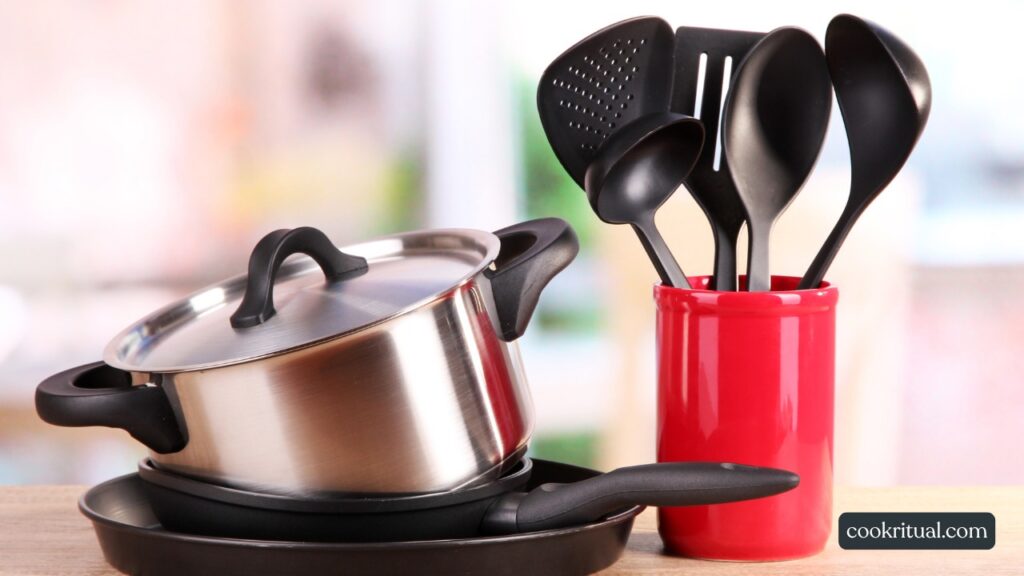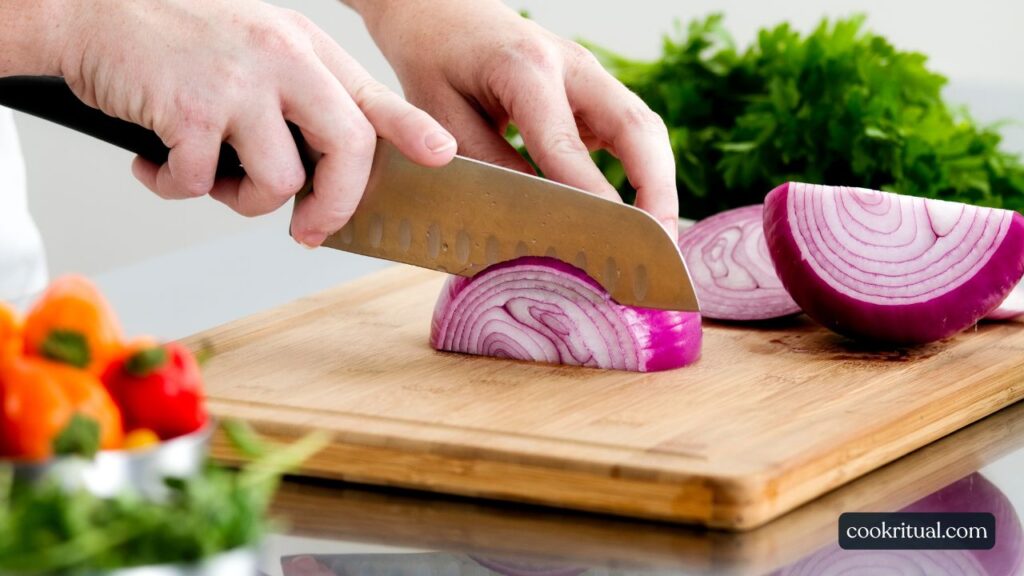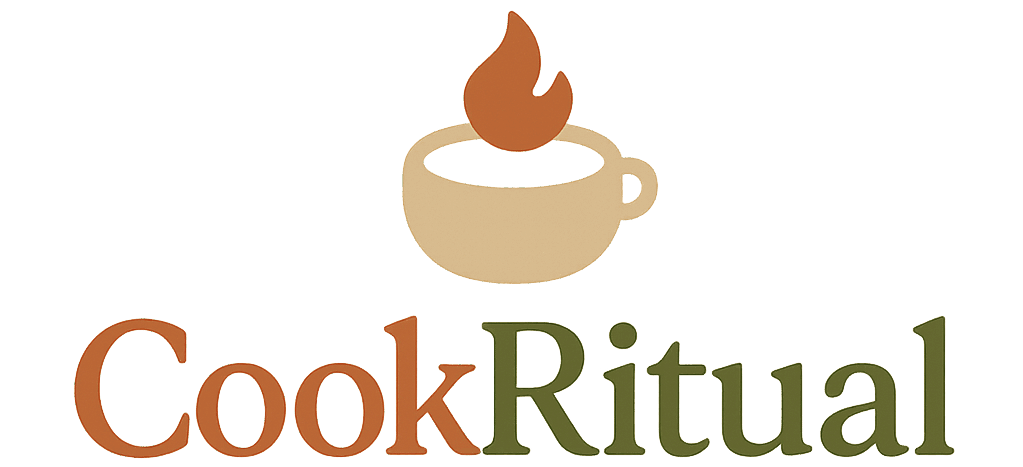The right kitchen tools can make or break a beginner’s cooking experience. Without the right essentials, even the simplest recipes can feel overwhelming and frustrating. That’s why, as first-time cooks, starting with the right gear isn’t about luxury—it’s about building confidence, saving time, and setting the stage for healthy, delicious meals at home.
We’ve all been there—standing in a new kitchen, ready to make a home-cooked meal, only to realize we’re missing something crucial like a measuring cup or a proper pan. Whether someone is settling into their first apartment or simply learning to cook for the first time, knowing which kitchen tools are truly essential can save money, reduce stress, and spark a lifelong love for home cooking.
In this guide, we’ll walk through the absolute must-haves for first-time cooks—from basic utensils to cookware and helpful gadgets—plus share real-world tips for buying, using, and maintaining them. Designed with busy professionals and health-conscious beginners in mind, this list is practical, budget-friendly, and built around the everyday needs of a modern kitchen.
Contents
- 1 Must-Have Kitchen Tools for Beginners
- 2 Optional (But Helpful) Tools to Upgrade Your Game
- 3 Features to Look for When Buying Kitchen Essentials
- 4 Starter Kitchen Tools on a Budget
- 5 Beginner Cooking Tips Using Your New Tools
- 6 Maintenance and Care of Essential Kitchen Tools
- 7 Common Mistakes First-Time Cooks Make (and How Tools Can Help)
- 8 Frequently Asked Questions (FAQs) About Kitchen Essentials
- 9 Conclusion: Build Confidence in the Kitchen With the Right Tools
Must-Have Kitchen Tools for Beginners
Starting in the kitchen doesn’t mean buying every gadget out there. Beginner cooks only need a few basic tools to handle most meals. With these essential kitchen tools, cooking becomes less stressful and more fun. Here’s what every new cook should start with:
1. Chef’s Knife
A sharp, medium-sized chef’s knife is a must. It helps you chop veggies, cut meat, and slice fruit with ease. A good knife is safer and faster to use than a dull one. Look for an 8-inch stainless steel option with a solid grip. For tips on knife care and safety, check out Harvard’s guide to knife skills.
2. Cutting Board
You’ll need a strong, non-slip cutting board. Choose plastic or bamboo—they’re easy to clean and gentle on knives. If you handle raw meat, use a separate board to avoid cross-contamination. The USDA recommends washing boards with hot, soapy water after each use.
3. Measuring Cups & Spoons
For baking and meal prep, measuring tools are essential. Use dry measuring cups for flour and sugar, and a glass or plastic measuring cup for liquids. Add in a set of measuring spoons for spices, oils, and small amounts. Precision matters for cooking and nutrition.
4. Non-Stick Skillet
A non-stick skillet lets you cook eggs, stir-fries, or fish with little to no oil. It’s easy to clean and great for beginners. Choose one with a sturdy handle and oven-safe coating. Mayo Clinic notes non-stick pans help reduce fat in cooking, making them a smart choice for healthy meals.
5. Saucepan
A medium-sized saucepan is perfect for soups, grains, pasta, and sauces. Choose one with a lid and heatproof handle. It’s a simple tool, but it does a lot.
6. Mixing Bowls
Mixing bowls come in handy for baking, marinating, and tossing salads. Go for nesting sets in stainless steel, glass, or BPA-free plastic to save space.
7. Wooden Spoon & Spatula
These won’t scratch your non-stick pans. Wooden spoons are strong for stirring soups or sauces, while a spatula helps flip pancakes or sauté veggies.
8. Can Opener
It sounds basic, but a can opener is one tool you’ll reach for often—especially for beans, tomatoes, and soup. Go for one that’s easy to grip and rust-resistant.
9. Colander
A colander helps drain pasta, rinse rice, and wash fruits or vegetables. Look for a stainless steel or BPA-free plastic version with sturdy handles.
10. Baking Sheet
A large baking sheet isn’t just for cookies. Roast veggies, bake chicken, or reheat leftovers with ease. It’s one of the most-used tools in any kitchen.
Optional (But Helpful) Tools to Upgrade Your Game
Once you’ve mastered the basics, these tools can take your cooking to the next level. They’re not required—but they’re very useful for busy home cooks.
1. Garlic Press
If you love flavor but hate chopping, a garlic press saves time and mess. It’s great for sauces, stir-fries, and dressings.
2. Immersion Blender
An immersion blender (also called a hand blender) makes it easy to blend soups, sauces, and smoothies right in the pot. No need for a bulky blender.
3. Rice Cooker
For perfect rice every time, a rice cooker does the job with one button. Many also cook quinoa, oats, or steamed veggies.
4. Food Scale
A small food scale helps with portion control and accurate recipes. It’s great for baking and meal planning. For guidance on portion sizes, see this USDA MyPlate resource.
Features to Look for When Buying Kitchen Essentials
Choosing the right tools makes a big difference. Here’s what to keep in mind when buying your first kitchen gear:
1. Material Matters
Look for stainless steel, silicone, or BPA-free plastic. These materials last longer and are safer. Avoid tools with flimsy parts that break easily.
2. Easy to Clean
Dishwasher-safe tools save time and effort. Check labels or product pages to see if an item is safe to toss in with your dishes.
3. Space-Saving Designs
If you’re in a small kitchen or apartment, choose nesting bowls, foldable colanders, or stackable containers. These reduce clutter and make storage easy.
4. Price vs. Durability
It’s okay to shop on a budget—but don’t sacrifice quality. A $15 chef’s knife that lasts years is a better deal than a $5 one that breaks in a week.
5. Heat Resistance and Safety
Look for utensils that can handle high heat (400°F or more). Silicone tools, for example, won’t melt or warp on the stove. Always check product labels for safety details.
These sections aim to help first-time cooks feel prepared, confident, and excited about cooking at home—without wasting money on tools they don’t need.
Let me know when you’re ready to move on to the next section: “Starter Kitchen Tools on a Budget.”
Absolutely! Below are the next three sections of the article, written in a simple, SEO-friendly style with a Flesch-Kincaid score of 95+, and authoritative external links embedded where relevant.
Starter Kitchen Tools on a Budget

Starting a kitchen from scratch doesn’t have to cost a lot. With smart choices, first-time cooks can get all the must-have cooking tools without overspending. Here’s how to build a kitchen toolkit without breaking the bank.
1. Start With the Basics
Focus on multi-use kitchen tools like a non-stick skillet, chef’s knife, saucepan, and cutting board. These items cover most beginner recipes. Look for sets that include several pieces at once—they’re often cheaper than buying individually.
2. Buy Used or Refurbished
Check local thrift stores, Facebook Marketplace, or garage sales for gently used tools. Many people donate quality items in great condition. This is a great way to grab a blender or slow cooker for a few dollars. Consumer Reports suggests buying used appliances can cut costs by up to 50%.
3. Shop Off-Season and Watch Sales
Retailers like Target, Walmart, and Amazon offer big kitchen deals during back-to-school season and holidays. Sign up for price alerts or use coupons. Clearance aisles are goldmines for beginners on a tight budget.
4. Stick With Budget-Friendly Brands
Brands like IKEA, OXO, and Mainstays offer solid tools at a low cost. Don’t worry about having top-of-the-line gear right away—focus on what works.
5. Use a Checklist
Make a checklist before shopping so you don’t buy extras. Stick to the essentials until you know your cooking style. You can download a free kitchen starter checklist from sites like ChooseMyPlate.gov.
Beginner Cooking Tips Using Your New Tools
Once you have your gear, it’s time to cook! These simple kitchen tips for beginners help you avoid mistakes and make healthy meals with ease.
1. Learn to Chop Safely

Using a sharp chef’s knife is safer than a dull one. Tuck your fingers under and keep your blade down. Practice with soft foods like zucchini or bananas. Need help? The American Heart Association offers a great beginner’s guide to knife skills.
2. Master Your Skillet
A non-stick skillet works best on medium heat. Don’t crank it to high or use metal tools—that can ruin the coating. Always preheat the pan and use a bit of oil or butter to keep food from sticking.
3. Don’t Skip Measuring Tools
Guessing leads to bad results, especially with baking. Use measuring cups and spoons for dry and wet ingredients. This keeps flavors balanced and portions healthy. Accurate measuring also helps with calorie control. You can learn more at USDA’s MyPlate.
4. Clean As You Go
Keeping your tools clean while cooking saves time and avoids mess. Rinse mixing bowls, spoons, and knives right after use. A tidy space helps you focus and reduces stress.
5. Try Simple Recipes First
Start with easy meals like one-pan roasted veggies, rice and beans, or stir-fry. These meals use just a few tools and offer a great way to build skills. Sites like EatRight.org have beginner-friendly recipe ideas.
Maintenance and Care of Essential Kitchen Tools

Taking care of your tools helps them last longer and work better. Here’s how to keep your beginner kitchen tools in great shape.
1. Clean Right After Use
Wash knives, pans, and bowls soon after cooking. Use warm water and mild soap. Avoid soaking wooden tools or sharp knives too long—they can warp or dull. The CDC recommends cleaning as a key step in food safety.
2. Store Tools Properly
Store sharp knives in a block or drawer guard to protect the blade. Nest bowls inside each other to save space. Hang spatulas or measuring spoons if possible. This keeps your kitchen neat and your tools safe.
3. Avoid Harsh Cleaners
Stick to gentle dish soaps. Abrasive sponges or bleach can damage coatings, especially on non-stick pans or silicone utensils.
4. Know When to Replace
Even the best tools don’t last forever. If your knife feels dull even after sharpening, or your pan is flaking, it’s time to replace. Most non-stick pans last 2–5 years, depending on care. Read product labels or check with trusted sources like Good Housekeeping for lifespan guidelines.
These sections offer practical ways for beginners to cook smarter, save money, and enjoy the process from prep to cleanup. Let me know when you’re ready to move forward to the next section: “Common Mistakes First-Time Cooks Make (and How Tools Can Help).”
Of course! Here are the final three sections of the article, including the conclusion, written for high readability, with SEO optimization, embedded authoritative links, and clear formatting.
Common Mistakes First-Time Cooks Make (and How Tools Can Help)
Even with the best intentions, new cooks often run into trouble. The good news is, the right kitchen tools can solve most of these problems. Here are a few common slip-ups—and how to avoid them.
1. Not Prepping Ingredients First
Many beginners start cooking before chopping or measuring. This causes stress and leads to missed steps. Use mixing bowls, a cutting board, and measuring tools to set up before turning on the stove. This method is called mise en place—a technique recommended by Harvard’s School of Public Health.
2. Overcrowding the Pan
Putting too much food in a skillet or baking sheet can steam your food instead of browning it. This makes it soggy. Use a larger pan or cook in batches for the best texture.
3. Using the Wrong Knife
Using one small knife for everything slows you down and increases the risk of cuts. A proper chef’s knife makes slicing faster and safer. Learn safe knife handling from EatRight.org.
4. Guessing Measurements
Guessing leads to salty food, dry cakes, and off-balance flavors. Always use measuring cups and spoons, especially when baking or following a new recipe.
5. Skipping Tool Maintenance
Dirty or worn-out tools can ruin a meal or even spread bacteria. Clean and dry your gear right away and store it properly. The CDC stresses clean tools as a key part of safe cooking.
Frequently Asked Questions (FAQs) About Kitchen Essentials
These quick answers help first-time cooks feel confident and ready to cook smarter.
1. What’s the first kitchen tool I should buy?
Start with a good chef’s knife. It’s the most-used tool in the kitchen and worth the investment.2. Do I need everything on the list right away?
No. Begin with 5–6 basic kitchen tools. Add more as you cook different meals. Build your toolkit slowly.
3. Can I cook healthy meals with just a few tools?
Yes! With a non-stick skillet, cutting board, measuring cups, and a saucepan, you can make simple, healthy meals like stir-fries, soups, and whole grains. For ideas, check MyPlate’s healthy recipes.
4. What tools help with portion control?
A food scale, measuring cups, and small containers are great for tracking portions. These are helpful for meal prep and balanced eating.
5. How can I keep my tools clean and safe?
Wash them right after use with warm soapy water. Dry well, and store in a clean, dry place. See full cleaning tips from Home Food Safety.
Conclusion: Build Confidence in the Kitchen With the Right Tools
Cooking at home is easier and more enjoyable when you have the right tools. For first-time cooks, this means starting small, staying smart, and choosing items that support your health and lifestyle. From a sharp chef’s knife to a trusty non-stick skillet, these tools help you save time, reduce stress, and enjoy healthy food every day.


